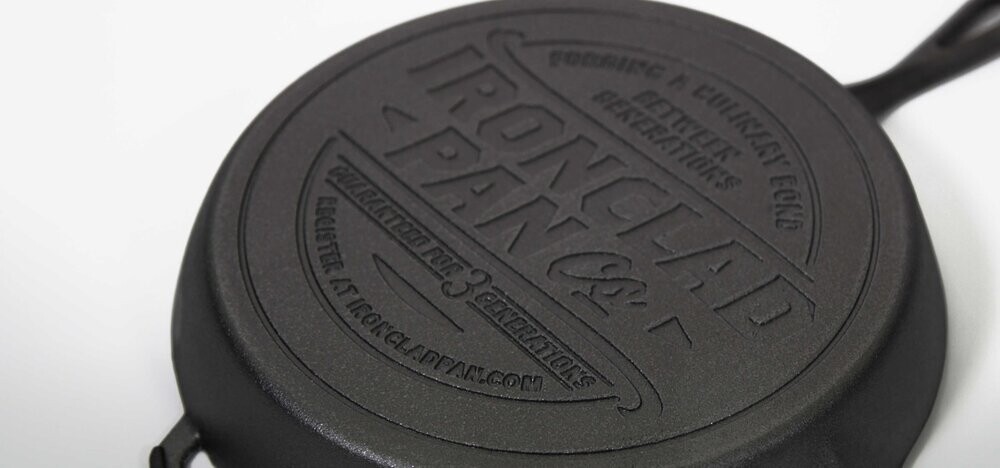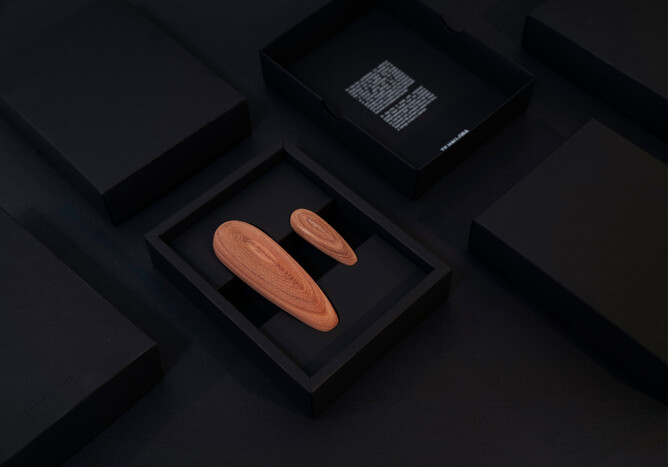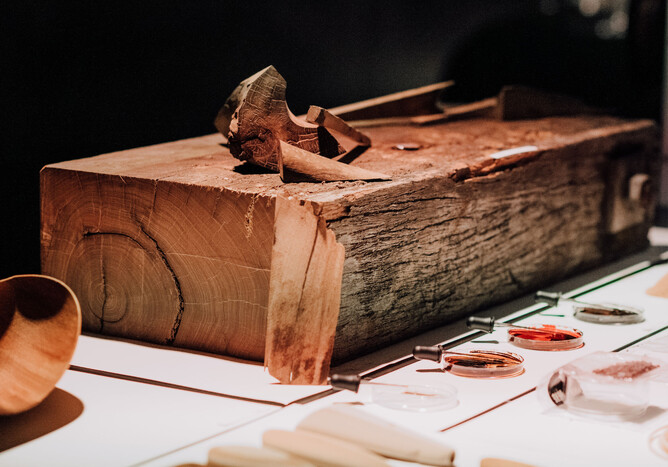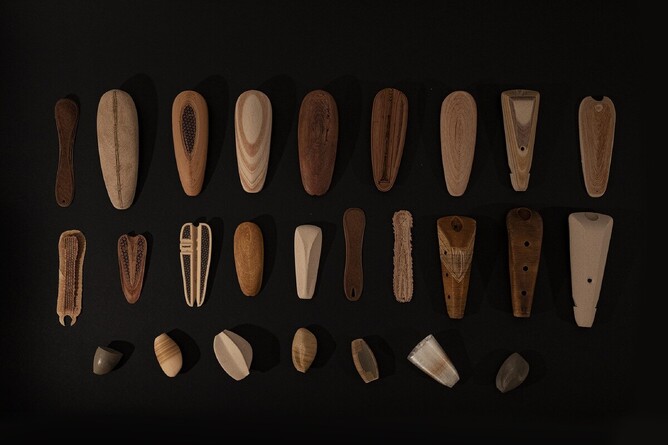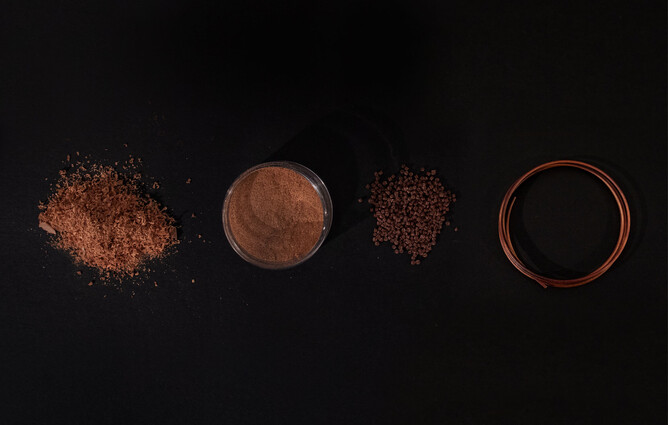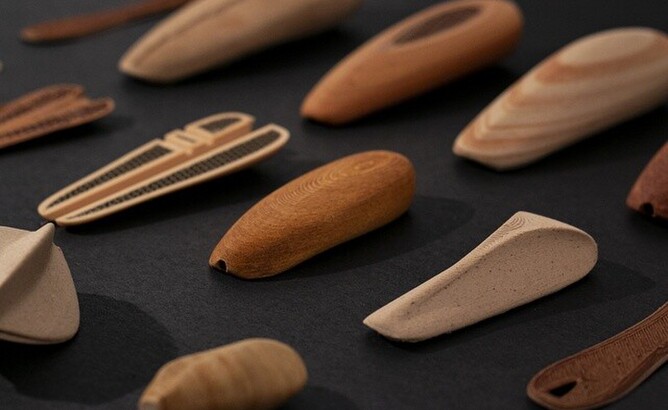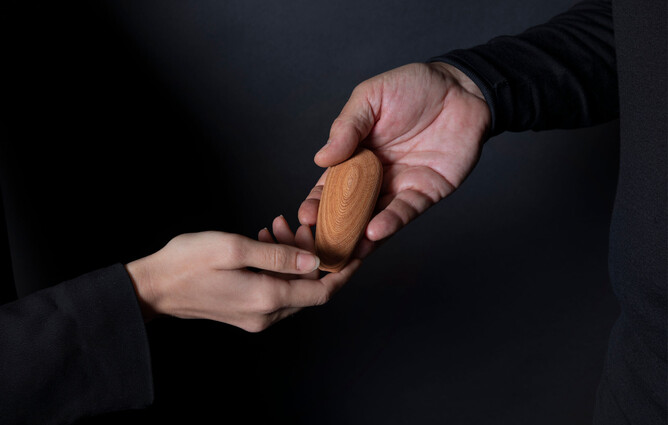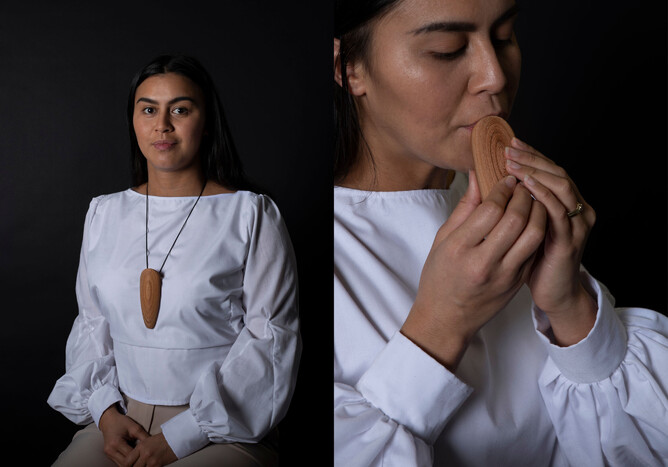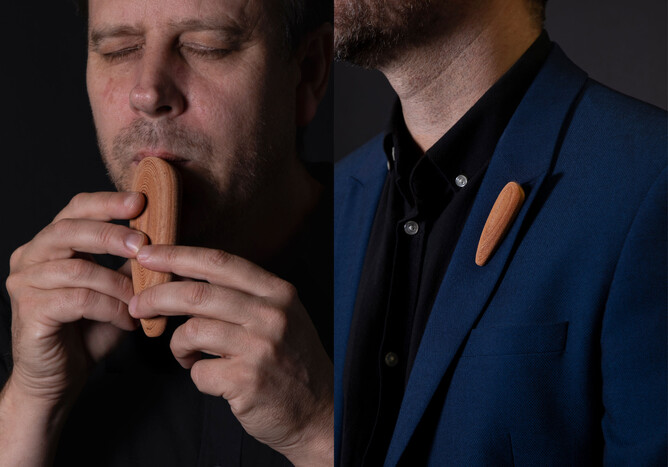In late 2019 Jasmax Architectural firm launched a new brand identity based around their bi-cultural core. Inspired by traditional Maori flutes used in spiritual ceremonies, Te Hau-Ora was created in the form of a 3D printed Koauau with accompanying broach. Jasmax says, “Created as a taonga to honour current employees and welcome new employees into the practice, Te Hau-Ora recognises the importance of belonging to a place of long connection to our land and its people, and it is designed to be passed on from one hand to another in a ceremonial exchange.”
3Duke Engineering was contacted to aid with scaling up production and help meet print demands in time for the companies launch. But the development, processes, techniques and ultimately the story behind this creative project is so worthy it had to be shared.
The project started with a block of purple heart timber salvaged from the Queens Wharf redevelopment, gifted to Jasmax by Panuku. Jasmax has a strong history with Queens Wharf from the redevelopment of the wharf and opening of Shed 10 back in 2011.
"Te Hau-Ora symbolises our collective values and the connection between the individual and the higher purpose of the work we do together. This Taonga - A Koauau - acknowledges the power of human agency and is a symbol of connection; between the physical and the intangible; form and function; tikanga and technology; and; the present and the past. it represents the creativity of human expression and through breath becomes animated and has life"
I was blown away when I meet the team at the Jasmax office for the first time. The sheer number of 3d printed design revisions developed in part with Maori artist James Rickard and master carver Karl Johnstone was just astonishing. These beautiful wooden forms scattered across the desk, each one different and unique from the next. Picking them up and holding them in hand I had one question on my mind; how did you get them to look and feel like wood?
The trick to making 3d printed parts feel heavier than they are is very clever, but it requires sophisticated printing equipment capable of printing dual materials. The internal structure of the print commonly referred to as infill, is printed with plastic that has been blended with metal particles. These metallic blended materials have a density and weight closer to actual metal. So by hiding this heavy material within the outer shell of a 3d print, they were able to simulate the 3d printed Koauau weight equal to that of one carved from solid wood.
But what about the wood grain? I am no stranger when it comes to 3d printing wood blended materials, They have been around for a while, but the weight of these objects combined with astonishing colour gradients had me absolutely perplexed.
The process behind creating wood blended printing plastics is not that straightforward. The purple heart timber is ground down into flour sized particles, in this case by means of a belt sander and a lot of patience! The flour is collected and sent of for processing, and then it is blended into PLA filament and spooled onto a roll, ready for use by FDM extrusion based 3D printers.
I have 3d printed plenty of wood blended PLA before, and while it does have a very unique wooden touch and smell, the coloration is always very homogeneous. So how on earth did Jasmax get such diverse colour alterations?
Methods have long been discussed among makers of ways to achieve a natural grain colouration when printing wood blend plastics. The most common idea discussed was to run a program modifier that altered the 3d printers extruder temperature up and down throughout the duration of a print. In theory higher temperatures would extrude a darker more burnt colour while normal temperatures would extrude the materials natural colour. On paper this is seemingly a perfect solution, however in practice it just doesn't really work. The temperatures required to significantly change the colour of the wood particles are far higher than what the plastic can handle being printed at, so in tests we only see prints without any distinguishable colour changes.
So whats the secret? Well as what commonly happens with people who try to come up with technical solutions, we sometimes overlook the very obvious...
The answer was to simply stain the printing filament with common wood dye before it was used for printing. While this method seems like a relatively straightforward process, I in no way want to detract from the copious amount of effort and testing put in by the Jasmax team. Specific hues of stain natural to the purple heart wood were selected, tested and used, but more important is the technique of layering the different stain colouration at appropriate lengths, with specific transitions which are in every way, tailored to the geometry and printing parameters of the Koauau.
The end result is that each Koauau is simply unique, just like a fingerprint.
